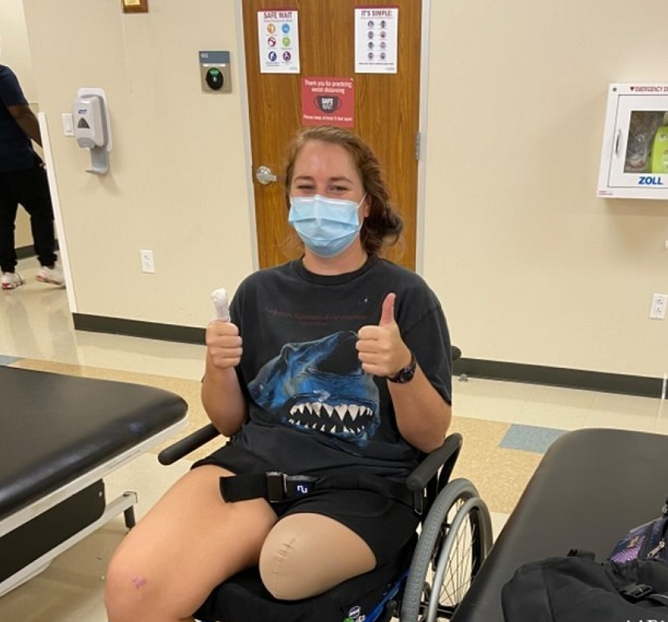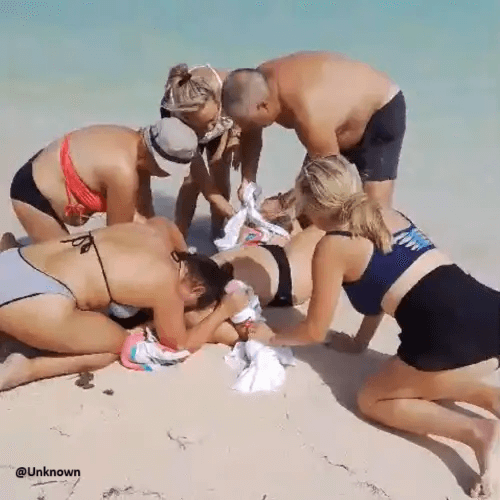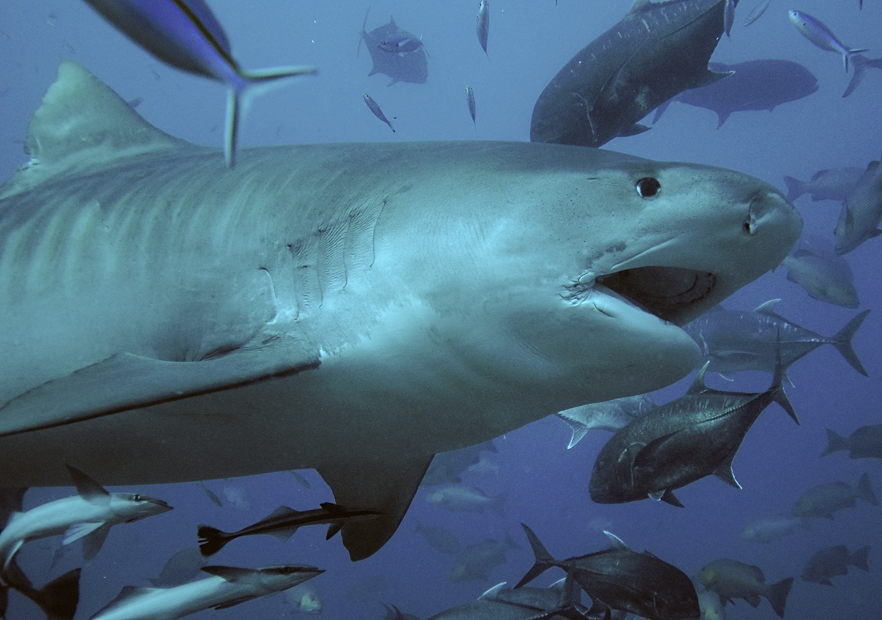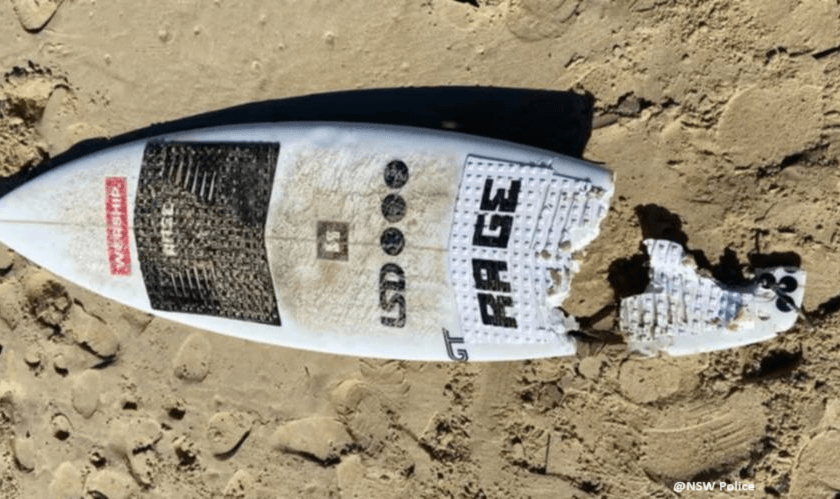A Texas students is recovering at home after losing her leg in a shark attack.
Brook Toussaint, 26, was in her third year of veterinary school in the tropical paradise of St. Kitts on Jan. 9.
An avid swimmer, she had prepared for a 3-mile swim to Booby island and back with her swim group, which included a professor and her best friend, Samantha.
Normally the group swims on the Caribbean side of the island, but on that day, their route led them through the rougher waters on the Atlantic side.
“The weather was so perfect or we wouldn’t have done this swim,” Toussaint told Tracking Sharks.
Around 8:45 a.m. Toussaint donned her brightly colored swim cap, rash guard and swim buoy and hopped in the water with the rest of the group. A total of three swimmers and four kayakers were present for the trek that day.
During the swim, Brook and the other swimmers would pop their heads above water to make sure they were near the group and that they still were headed in the right direction. Brook was so deliberate about this that her professor called her the sheep dog of the group.
About an hour into the swim, the group was approximately one mile from shore, half a mile from their goal of Booby island, when Toussaint popped her head above water to check on her swim mates.
“I see that all the kayaks have gathered together along with the other swimmers, so I head toward them,” she said.
She took a few strokes toward the group when, all of a sudden, she felt a crushing pressure on her left leg. “It didn’t hurt. It just felt like my leg was being squeezed very hard,” she said.
The pressure puzzled her, and the idea of a shark was so far from her thoughts, that she first wondered if an octopus had grabbed her leg, or maybe a sea turtle biting out of curiosity.
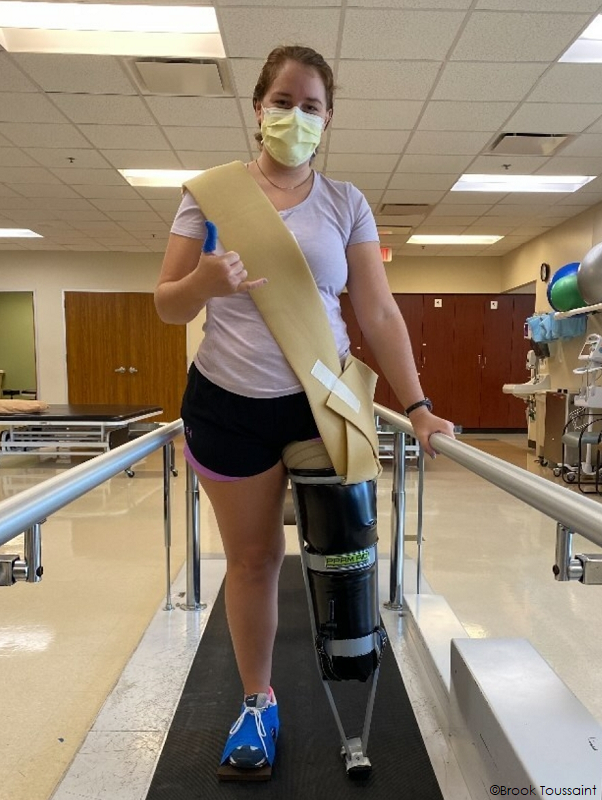
“I turned around to look and I’m just staring right in the face of a shark. All I could see was straight into his face.”
A large tiger shark had her left knee in its mouth. Her fight or flight sense kicked in and she was not going to go down easily.
“I just knew . . . okay, [it’s a] shark . . . punch it in the nose! I tried to give it my right hook, but it was not a good one. When I did hit it in the nose, it didn’t give a flying pancake.
“It still held on. So, I was like . . . okay . . . I don’t have a lot of options here, but I gotta get the shark off of me. So, I stuck my thumb in its eye, and it finally let go.”
After getting its eye gouged, the shark shook its head and disappeared.
“I just looked at my leg to survey it and see if there was anything I needed to know about it immediately . . . if it was still there or if it was gone,” she said.
She said her leg was “completely shredded,” and despite her study in a medical field, she could not stand looking at her own blood.
She popped her head above the water and screamed, “shark!” to warn the other swimmers and called for help, continuing to plea for help until they reached her, growing weaker with each breath.
Although the other members of her group were only 20 feet away, Toussaint knew from the red plume that was released around her that she had lost a lot of blood already and was losing even more with each passing second.
With no thought to their own safety, both her professor and friend, Samantha, who was in a kayak, came to assist.
Samantha’s own instincts had kicked in when she heard Brook shout “shark!”. She immediately jumped out of the kayak, swam over and put her own life jacket on Brook.
Samantha and the professor grabbed the jacket straps and Brook’s wrists, respectively, to pull Toussaint across the bow of the boat to keep her out of the water.
“I lost so much blood, I couldn’t oxygenate enough, my brain was screaming at me the whole time to get more,” Toussaint said.
“I really didn’t even register any pain, probably due to the adrenaline. I could just feel my leg as a floating entity. It was just something that was there.”
Thinking quickly, Samantha, a bovine veterinary student, used the strap from the swim buoy as a makeshift tourniquet. The group had two cell phones and initiated their emergency plan, which included alerting their professor’s wife, who was stationed at the beach in case of emergency.
The third swimmer, Ki, had climbed into the kayak to try and paddle the rest of the way to Booby island but could not make any headway in the current with Brook hanging across the bow and two people holding onto her.
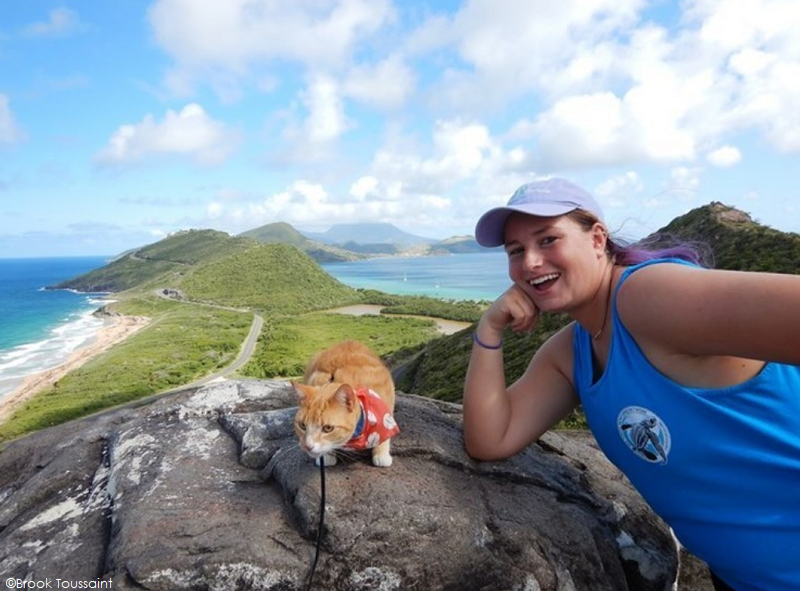
The group fought against the water some 25 minutes when fatigue started to sink in.
“I heard my friend tell our professor, ‘I’m starting to cramp up. I don’t know how much longer I’ll be able to hold onto her.’ Our professor tried to reassure her. And then I heard him say ‘oh now I’m starting to cramp up, too.’ A second later we heard the hum of the boats . . . just in time.”
Toussaint remembers being lifted/pulled(?) onto the boat and placed in a rescue stretcher, and there was terrible pain whenever her leg was moved.
“I was conscious, but could barely breathe, and give an occasional thumbs up to show I was still alive,” she said.
Upon arrival at the hospital, the nurses swarmed her, struggling to find a vein they could start an IV in. Once it was in and she was also receiving oxygen, Toussaint said she could finally breathe so much better.
She overheard the talk of amputation and began preparing herself mentally as they started administering anesthesia.
After surgery, she spoke with her friends and they were able to piece together what happened. “They said it was a tiger shark. I asked how they knew, and [it was because] they saw it from the kayak,” she said. It was circling everyone as she was laying across the kayak, after the bite.
She also found out that her friend kept an eye on the shark for those 10 minutes, continuously repositioning the kayak to keep it between the shark and Brook. Thankfully, the shark left without approaching Samantha or the professor who were treading water and trying to keep Brook from slipping into the ocean.
After her emergency amputation, the next day Toussaint was flown to Texas on a medical flight where she was admitted to the trauma hospital and then began physical therapy. She is now home, and with the help of her sister Paige, is accepting and overcoming the new obstacles that come from missing a leg. Also, during her scuffle with the shark, her thumb was damaged, which may have occurred when she punched the shark in the nose.
While fighting an attacking shark is the correct thing to do, aiming for the nose can lead to more injury as the snout is angled and the fist could end up sliding into the shark’s teeth or mouth. The better target is the gills and eyes.
The event hasn’t put Brook off the water.
“I was worried that this was going to deter people and have them scared to get in the water. Water safety is so important- in regards to open water, it starts with knowing how to swim, then you can learn how to adapt to beyond that. The safety measures and preparation we took that day saved my life. I hope that my surviving shows others how critical it is to be prepared. It is always important to take the proper precautions when getting in the water,” she said.
Upon reflection of the precautions taken that day, she believes that the brightly colored swim caps helped with easy identification and recommends to carry a tourniquet and first aid kit whenever possible.
Toussaint also recommends checking the weather and talking with people who know the marine life and currents in the area.
“I felt like an idiot afterward, because once Samantha talked to some local fishermen, they were like, ‘oh yeah, there are tiger sharks on the Atlantic side.’ Oh yeah, we know that now, too,” she joked.
She doesn’t hold any ill will toward sharks. “I have always had a healthy fear [or respect] of the ocean and what’s in it,” she said.
“I’m not going to judge sharks as a whole or condemn them, but I am not going to work on any of them as a vet,” she laughingly said. “If I ran away from the ocean every time a shark bit off my leg, I would never get to swim.”
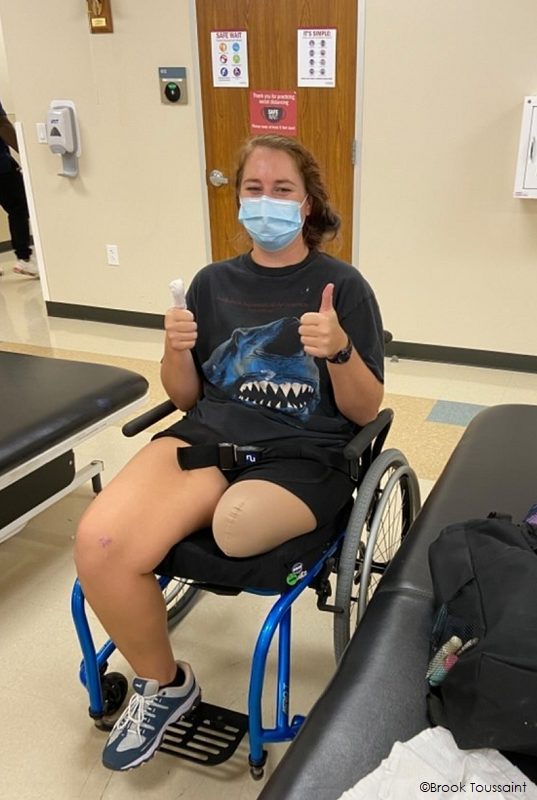
Brook has a long road ahead of her and many medical bills.
A GoFundMe has been set up to help with her long-term medical care. She is also very thankful to her rescuers.
“I owe my life to everyone who was there that day. They did something fierce and something brave. They essentially put their lives on the line to help save mine.”
The approximate location has been marked on the 2021 Shark Attack Map.
